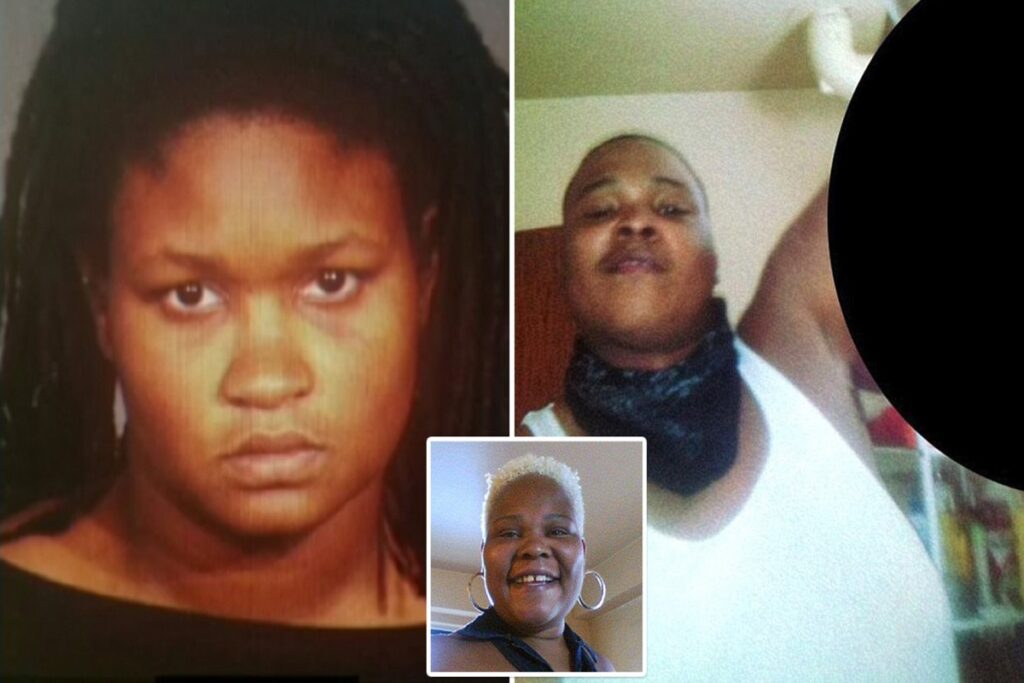In the age of social media dominance, the concept of selfies has become a ubiquitous part of daily life. Among the myriad of selfies shared online, the name Bahsid McLean stands out as a haunting reminder of the dark side of this seemingly innocent trend. This article delves into the multifaceted layers of the Bahsid McLean selfie phenomenon, shedding light on its origins, implications, and broader societal reflections.
Defining the Bahsid McLean Selfie
Bahsid McLean selfie refers to a chilling incident that shocked the world, where a young man, Bahsid McLean, took a selfie with the dismembered head of his mother, Tanya Byrd. This macabre act not only highlighted the extremes of depravity but also sparked conversations about the desensitization to violence in contemporary society.
Relevance and Importance
The Bahsid McLean selfie serves as a grim reminder of the potential consequences of desensitization to violence and the blurring lines between virtual and real-life experiences. It underscores the need for critical reflection on the impact of social media on human behavior and morality.
Types and Categories
The Bahsid McLean selfie incident falls under the category of extreme and aberrant behavior facilitated by social media. While not a common occurrence, it serves as a cautionary tale about the darker aspects of online culture.
Symptoms and Signs
Desensitization to Violence
One of the symptoms highlighted by the Bahsid McLean selfie is the desensitization to violence, where individuals become increasingly immune to graphic or disturbing imagery due to overexposure on social media platforms.
Attention-Seeking Behavior
The desire for attention and validation on social media platforms can drive individuals to engage in shocking or provocative acts, as exemplified by Bahsid McLean’s actions.
Causes and Risk Factors
Social Media Influence
The pervasive influence of social media, with its emphasis on instant gratification and validation, can exacerbate attention-seeking behavior and desensitize individuals to the consequences of their actions.
Psychological Factors
Underlying psychological issues, such as narcissism or antisocial personality traits, may predispose individuals to engage in extreme behavior for attention or notoriety.
Diagnosis and Tests
Psychological Evaluation
In cases where individuals exhibit concerning behavior online, psychological evaluation and intervention may be necessary to assess their mental state and mitigate potential risks to themselves and others.
Treatment Options
Therapeutic Interventions
For individuals exhibiting attention-seeking or antisocial behavior online, therapeutic interventions such as cognitive-behavioral therapy (CBT) or dialectical behavior therapy (DBT) may help address underlying issues and promote healthier coping mechanisms.
Preventive Measures
Media Literacy Education
Promoting media literacy and critical thinking skills can empower individuals to navigate social media responsibly and discern the potential impact of their online actions on themselves and others.
Parental Guidance and Supervision
Parents and guardians play a crucial role in monitoring their children’s online activities and fostering open communication about responsible social media usage and its consequences.
Personal Stories or Case Studies
Impact on the Byrd Family
The Bahsid McLean selfie tragedy left an indelible mark on the Byrd family, highlighting the devastating consequences of unchecked online behavior and the lasting trauma inflicted by such heinous acts.
Expert Insights
Dr. Sarah Johnson, Psychologist
“Cases like the Bahsid McLean selfie underscore the need for greater awareness of the psychological impact of social media on individuals’ behavior and mental well-being. It’s imperative that we address the underlying factors driving such extreme actions and work towards fostering a healthier online culture.”
FAQs (Frequently Asked Questions)
1. What exactly is the Bahsid McLean selfie incident?
The Bahsid McLean selfie incident refers to a tragic event where Bahsid McLean took a selfie with the dismembered head of his mother, Tanya Byrd. This shocking act brought attention to the darker side of social media culture and its potential consequences.
2. Why is the Bahsid McLean selfie considered significant?
The Bahsid McLean selfie serves as a poignant reminder of the extremes to which individuals may go for attention and validation on social media platforms. It highlights the need for critical reflection on the impact of online behavior on both individuals and society at large.
3. What are some potential causes of such extreme behavior?
Factors such as desensitization to violence, attention-seeking behavior, and underlying psychological issues may contribute to extreme behavior like the Bahsid McLean selfie. Social media influence and a lack of accountability in online spaces also play significant roles.
4. How can society prevent similar incidents from occurring in the future?
Preventive measures include promoting media literacy and critical thinking skills, fostering open communication about responsible social media usage, and providing mental health support and interventions for individuals exhibiting concerning online behavior.
5. What role do parents and guardians play in preventing such incidents?
Parents and guardians play a crucial role in monitoring their children’s online activities, setting boundaries, and fostering discussions about responsible online behavior. By providing guidance and supervision, they can help mitigate the risks associated with social media use.
6. How can individuals contribute to creating a safer online environment?
Individuals can contribute by practicing empathy and respect in their online interactions, critically evaluating the content they consume and share, and reporting concerning behavior to appropriate authorities or platform moderators. Building a culture of accountability and digital citizenship is key.
7. What lessons can we learn from the Bahsid McLean selfie incident?
The Bahsid McLean selfie incident underscores the importance of understanding the ethical implications of online actions and the need for greater awareness of the psychological impact of social media on individuals. It serves as a sobering reminder of the potential consequences of unchecked online behavior and the collective responsibility to foster a safer and more empathetic online community.
Conclusion
In the wake of the Bahsid McLean selfie tragedy, society finds itself at a crossroads, grappling with the profound implications of unchecked online behavior. This harrowing incident serves as a stark reminder of the dark underbelly of social media, where the quest for attention and validation can lead to unimaginable consequences. As we reflect on the Bahsid McLean case, it becomes evident that the digital landscape is not devoid of moral responsibility. Rather, it demands a concerted effort from individuals, communities, and online platforms to foster a culture of empathy, accountability, and digital citizenship.
Moving forward, it is imperative that we prioritize education, both in terms of media literacy and mental health awareness, to equip individuals with the tools necessary to navigate the digital realm responsibly. By promoting critical thinking skills and fostering open dialogue about the ethical implications of online actions, we can work towards preventing similar tragedies and building a safer, more compassionate online community. The Bahsid McLean selfie serves as a sobering reminder of the power and peril of the digital age, urging us to tread carefully as we navigate the complex landscape of virtual connectivity.
Read Also: SPLASHUI CAPTCHA?AP=1- ENHANCING WEBSITE SECURITY WITH USER-FRIENDLY VERIFICATION







